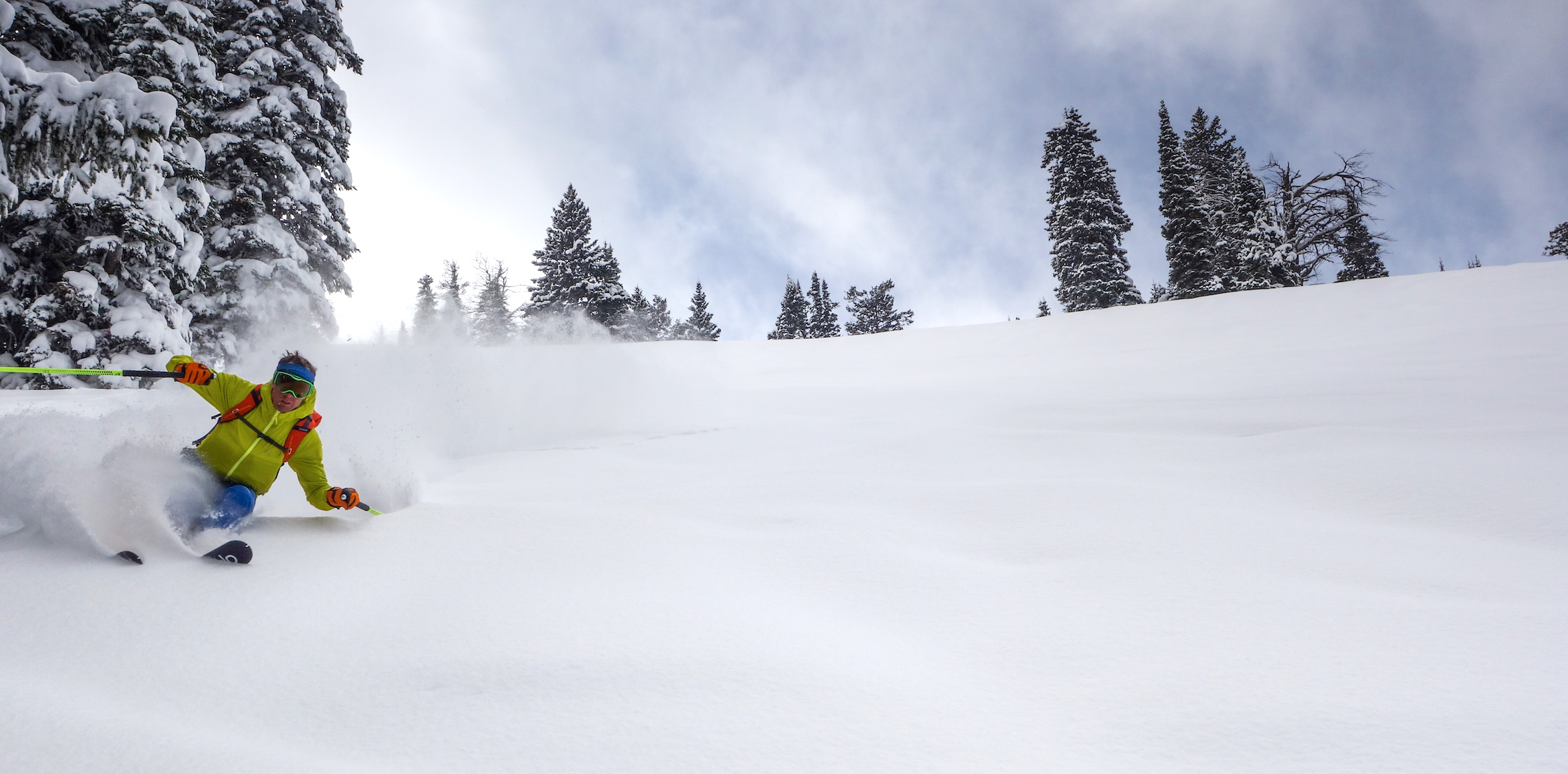 Over the last several months, a few commenters have suggested that I update my “quiver” piece that I wrote several years ago. I’ve certainly gone through a few skis since then, discarding some I didn’t like while embracing a few that I did. I will list my favorites here while expanding on the topic of what (I think) makes a good ski for ski alpinism and general back country whoring. So, while the snow is finally falling in Alaska and the temperatures drop, I’ll take a break from whining about my jacked up knee and write about something perhaps more interesting.
Over the last several months, a few commenters have suggested that I update my “quiver” piece that I wrote several years ago. I’ve certainly gone through a few skis since then, discarding some I didn’t like while embracing a few that I did. I will list my favorites here while expanding on the topic of what (I think) makes a good ski for ski alpinism and general back country whoring. So, while the snow is finally falling in Alaska and the temperatures drop, I’ll take a break from whining about my jacked up knee and write about something perhaps more interesting.
For light-ish and fast-ish ski mountaineering, the choice for skiers has grown exponentially since my first serious forays into the discipline over a 15 years ago. I throw on the “ish” there because I’ve decided that the absolute lightest skis are not necessarily the best tools for what I like to do. Certainly, there are sub disciplines of our favorite activity (long traverses and “tours in a day”) that benefit from, say, race gear but our bread and butter days are better served with more substantial sticks.
There are two reasons I’ve beefed up my quiver. One is that slightly heavier skis simply ski better. Damper, more predictable, forgiving are all qualifiers that come to mind when skis get a little more material in them. This “material” can be a combination of edge thickness, side wall, lay up, core and base. As manufacturers strive to drop weight, all of these qualities are on the design chopping block. Which one(s) are chosen to modify will ultimately impact some aspect of performance and durability.
That brings me to the second point - durability. Whether you’re looking to invest in skis that will serve you well for several seasons or simply want a pair that will get you through your next adventure, durability is paramount. As Doug Coombs once pointed out, you’re gonna hit rocks because that’s where the best skiing is. For sure, while meadow skipping mindless powder is all fun and dandy, my heart lies with the rock-walled, narrow hallways that are the main stay of ski alpinism. Climbing them, looking down them and dropping into them gets my heart racing like no other activity I know. It’s like a drug. The problem is that these ski lines force you to ski only one narrow corridor of glorious snow and that surface and sub surface is often laden with sharks. The right ski will take a hit from one of these predators and hardly show it while others will completely explode and alter the course of your day in a bad way. We’ll touch on both of these scenarios coming up.
Weight Rules
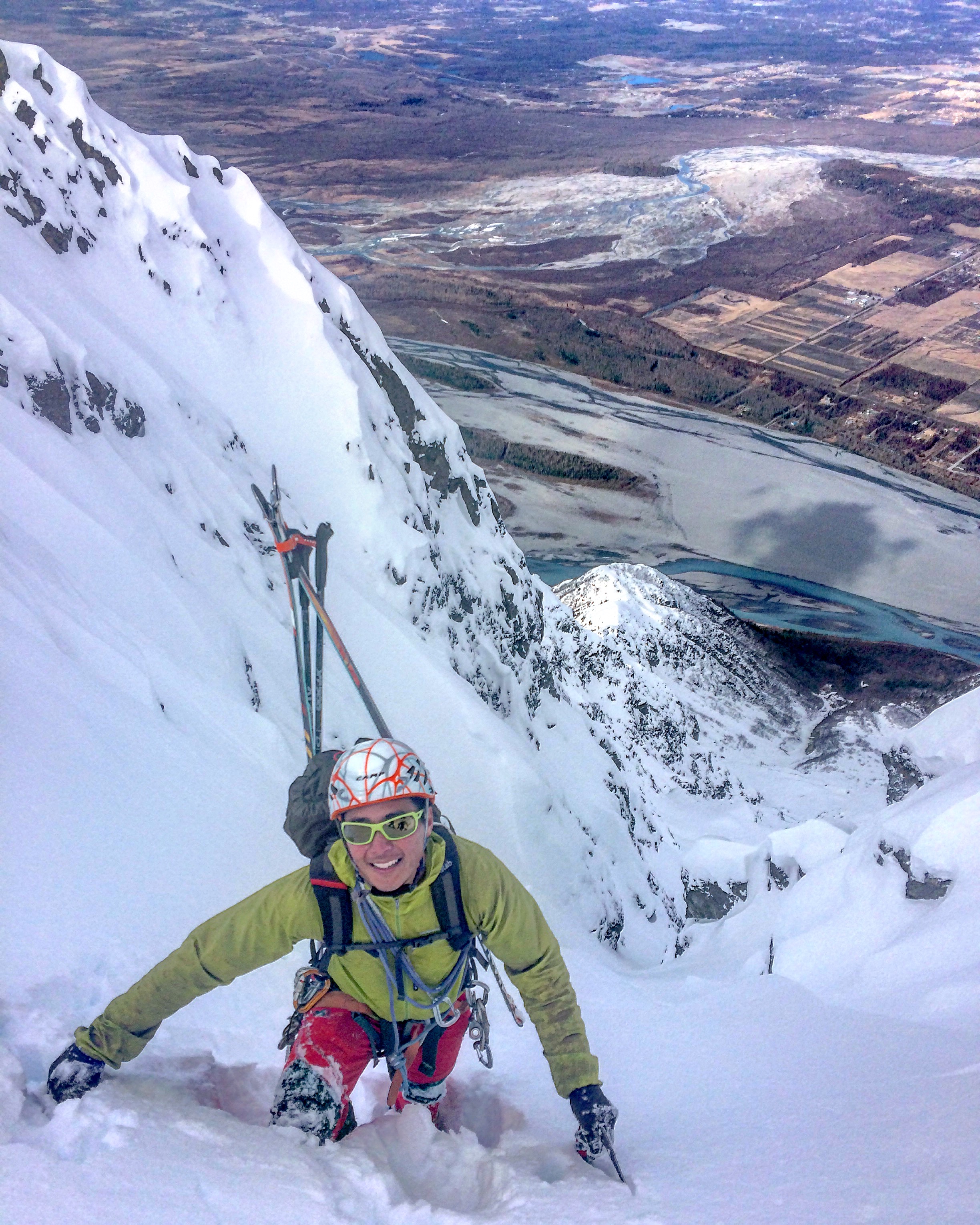 Sam Inouye 6,000 feet above the Knik, appreciating his light set up. Photo: Mat BruntonBack when I was an avid skimo racer, I could literally ski any terrain on any gear. Racing a lot simply makes one capable on a variety of skis and boots. Because of this, I was less concerned about performance of skis than I was about their weight. I wanted to go far and fast (on the up, at least) and every gram counted. I chose skis on that quality alone. And as these tools failed in one way or another, I became aware of how ski designers shaved weight to fill this niche in the market. Performance changes paralleled the weight savings but I didn’t concern myself with that initially. What I did notice, however, was a trend toward several design features that got skis where they wanted them on the scale.
Sam Inouye 6,000 feet above the Knik, appreciating his light set up. Photo: Mat BruntonBack when I was an avid skimo racer, I could literally ski any terrain on any gear. Racing a lot simply makes one capable on a variety of skis and boots. Because of this, I was less concerned about performance of skis than I was about their weight. I wanted to go far and fast (on the up, at least) and every gram counted. I chose skis on that quality alone. And as these tools failed in one way or another, I became aware of how ski designers shaved weight to fill this niche in the market. Performance changes paralleled the weight savings but I didn’t concern myself with that initially. What I did notice, however, was a trend toward several design features that got skis where they wanted them on the scale.
P-Tex
Obviously, most of the time when you hit a rock, the base of your ski takes the brunt of the force. It’s a cringe-worthy moment when you feel that momentary grab and decelleration underfoot. It’s usually followed by an abrupt stop, pop the ski off and check the damage. With the right ski, a smile follows as only a scratch is revealed. On the flip side, your heart sinks as core shot is revealed. Which one you get is in part governed by the both the quality of the base material and it’s thickness and of course, the energy and dynamics of the encounter.
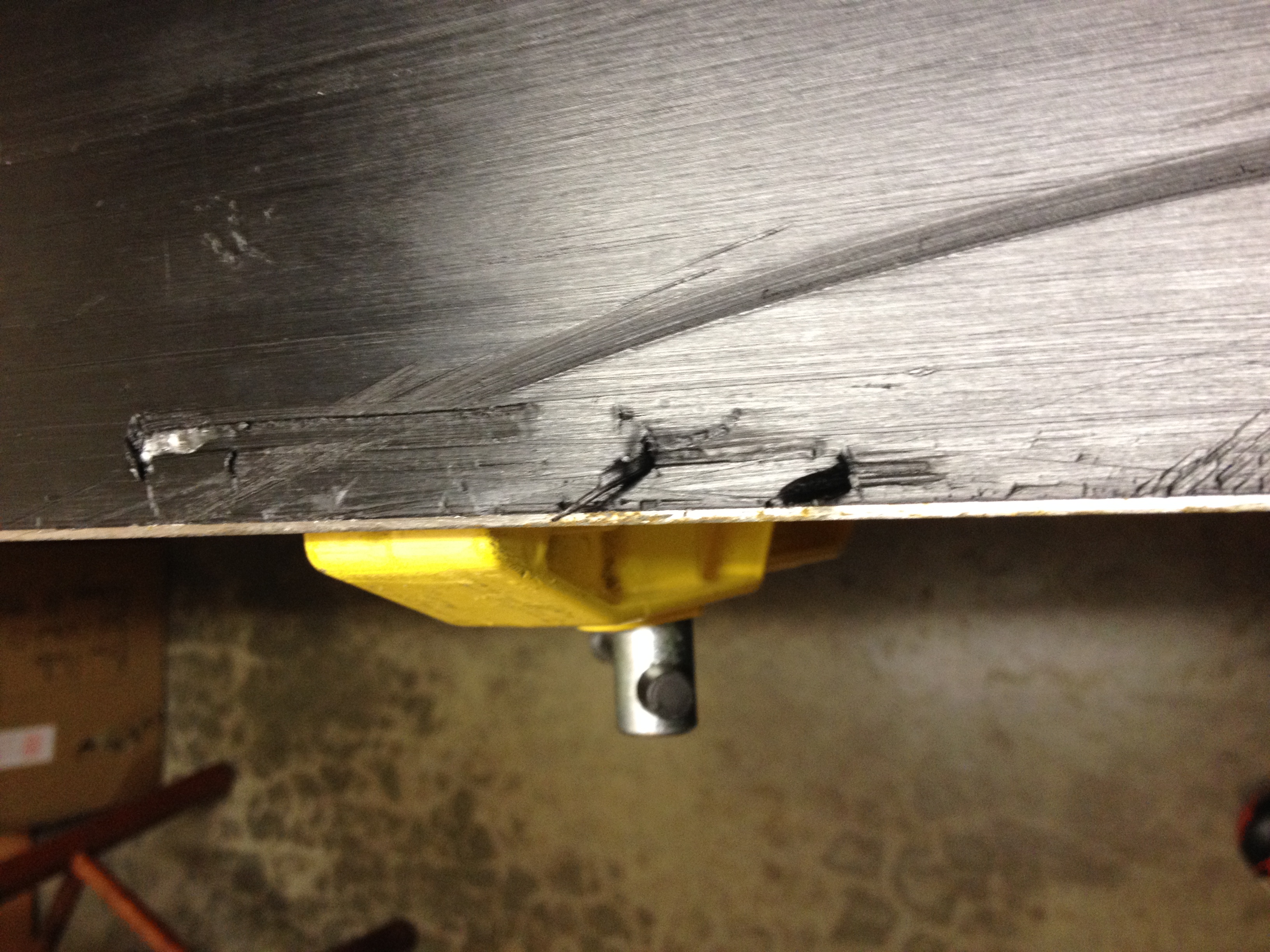 You need enough base thickness to absorb this kind of hitAs you dig down on the base material of various skis, you first notice “extruded” versus “sintered” material. All high quality skis use the much harder sintered high molecular weight polyethylene for their bases. This stuff “holds” more wax and is way more durable than the cheaper extruded crap. Within the sintered genre, you’ll find 2,000 to 6,000 which is a measure of the hardness. Without getting too deep in the weeds, hard base material is more durable but is also harder to work (repairs, filing, waxing). I love spending hours at my ski bench and oddly enough, offer to tune my friends’ skis ….just because. I don’t mind dealing with P-tex 5,000 bases. For the less diligent, the softer stuff will be less frustrating and tedious when you finally get around to some base work.
You need enough base thickness to absorb this kind of hitAs you dig down on the base material of various skis, you first notice “extruded” versus “sintered” material. All high quality skis use the much harder sintered high molecular weight polyethylene for their bases. This stuff “holds” more wax and is way more durable than the cheaper extruded crap. Within the sintered genre, you’ll find 2,000 to 6,000 which is a measure of the hardness. Without getting too deep in the weeds, hard base material is more durable but is also harder to work (repairs, filing, waxing). I love spending hours at my ski bench and oddly enough, offer to tune my friends’ skis ….just because. I don’t mind dealing with P-tex 5,000 bases. For the less diligent, the softer stuff will be less frustrating and tedious when you finally get around to some base work.
Related to the issue of this base plastic is just how thick a sheet they put down. This isn’t always obvious or even stated by the manufacturer. It’s not until you rip your base open that you see just how little there is. To wit, a few years ago I became enamored with Black Crows skis after spending a few months in Chamonix. They were not the lightest skis out there by a long shot but they were sexy. My first early season day saw the mother of all core shots pull out a banana peel section that required field knife application to cut off and make them run again. The shit was like tissue paper. I knew right then how they got the weight down. Other companies have followed suit. You’ve been warned.
Edges
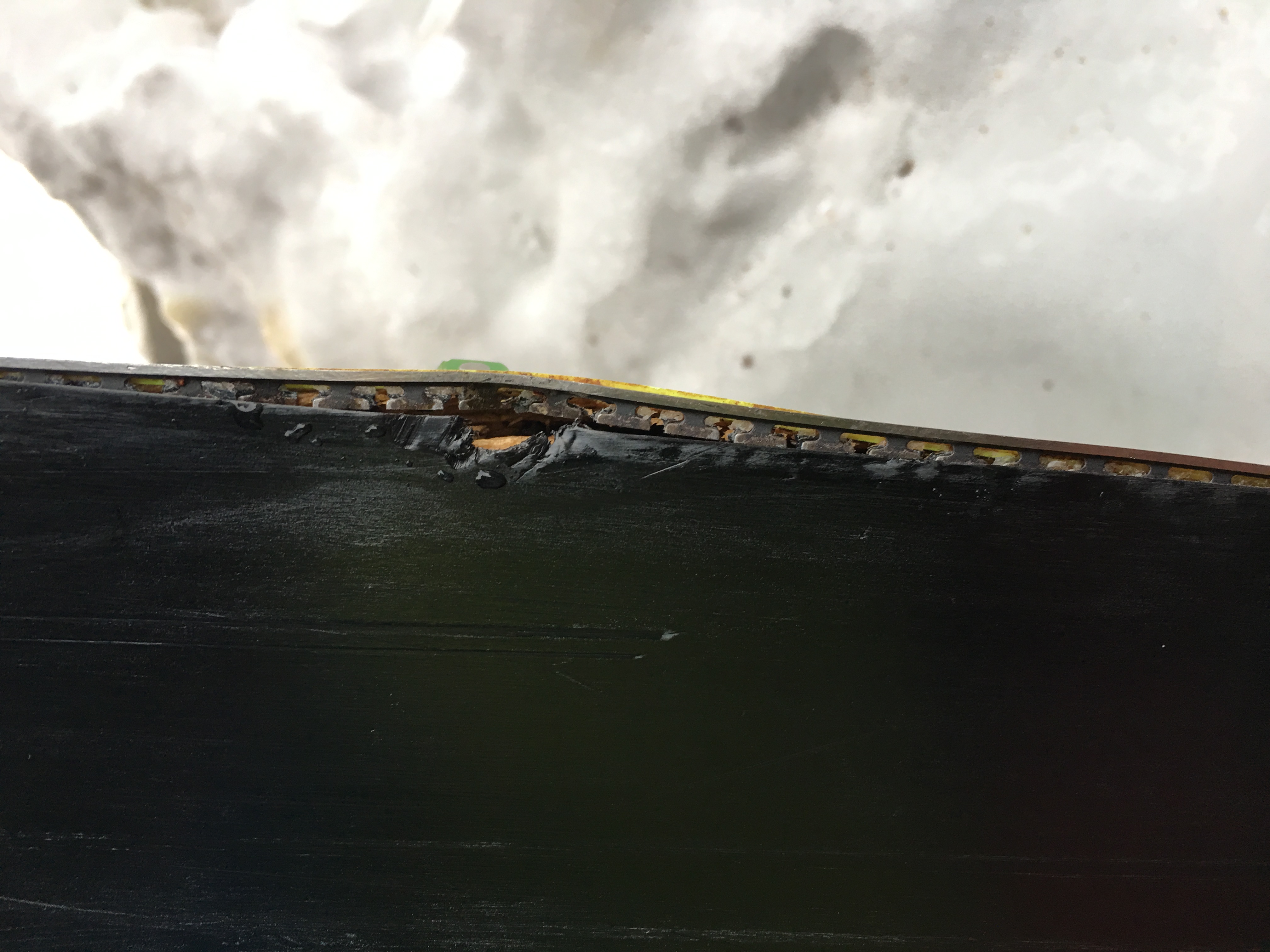 Even a partial sidewall couldn't keep this Dynafit Cho Oyu from explodingMost high end ski makers are using good steel on their edges. To save weight, some skis are built with the edges stopping at the limit of the running surface of the ski. This doesn’t generally cause a problem for normal skiing. However, when negotiating narrow couloirs, ski tips and tails often ride up on the margins. catching the blunt end of the metal edge where it terminates can lead to issues of pulling off away from the sidewall or base. On the other hand, the softer base and glass material seems to catch less when on rock which might be beneficial and is certainly less cringe inducing.
Even a partial sidewall couldn't keep this Dynafit Cho Oyu from explodingMost high end ski makers are using good steel on their edges. To save weight, some skis are built with the edges stopping at the limit of the running surface of the ski. This doesn’t generally cause a problem for normal skiing. However, when negotiating narrow couloirs, ski tips and tails often ride up on the margins. catching the blunt end of the metal edge where it terminates can lead to issues of pulling off away from the sidewall or base. On the other hand, the softer base and glass material seems to catch less when on rock which might be beneficial and is certainly less cringe inducing.
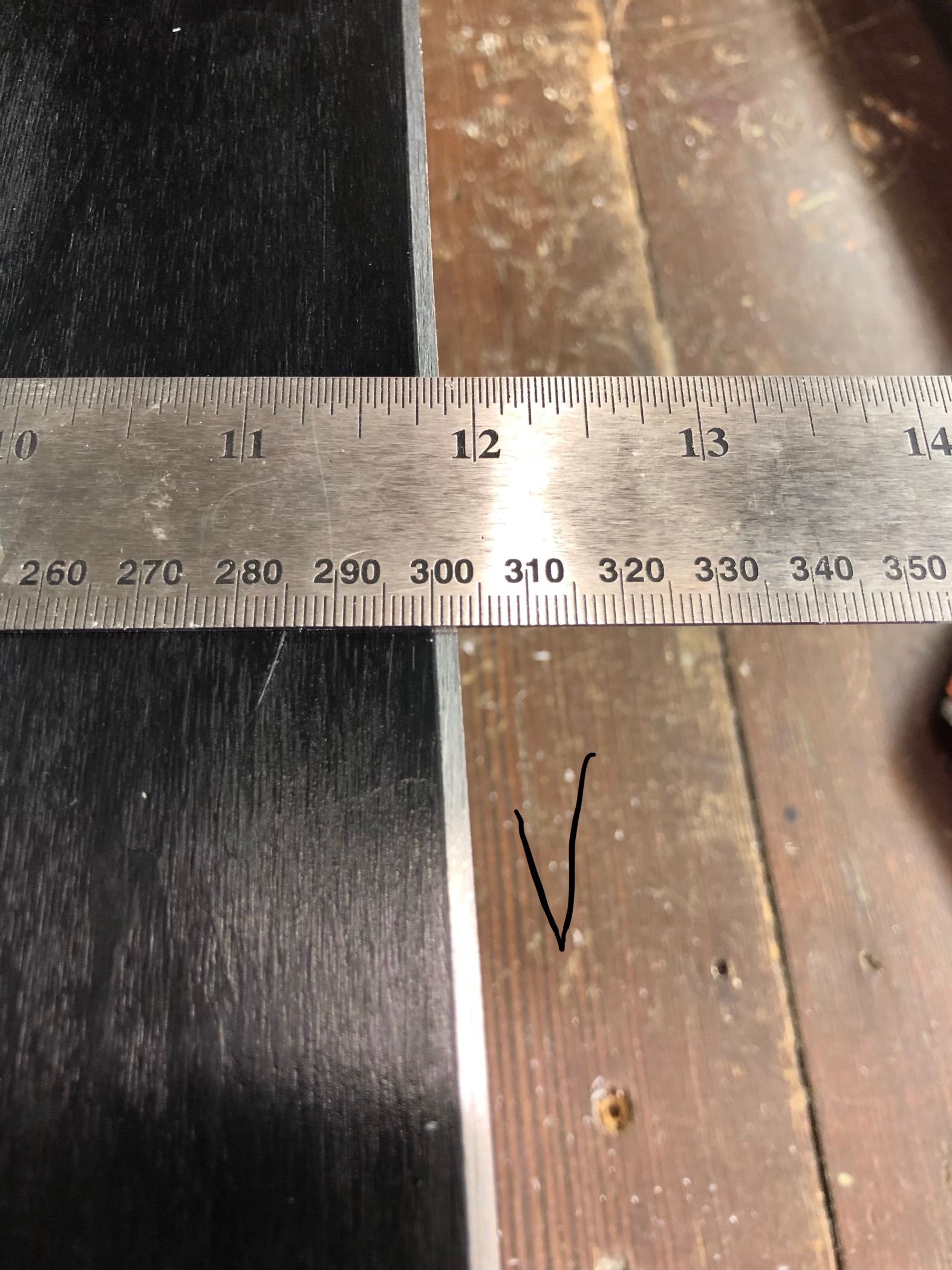 No skimping on steel in the Voile Objective
No skimping on steel in the Voile Objective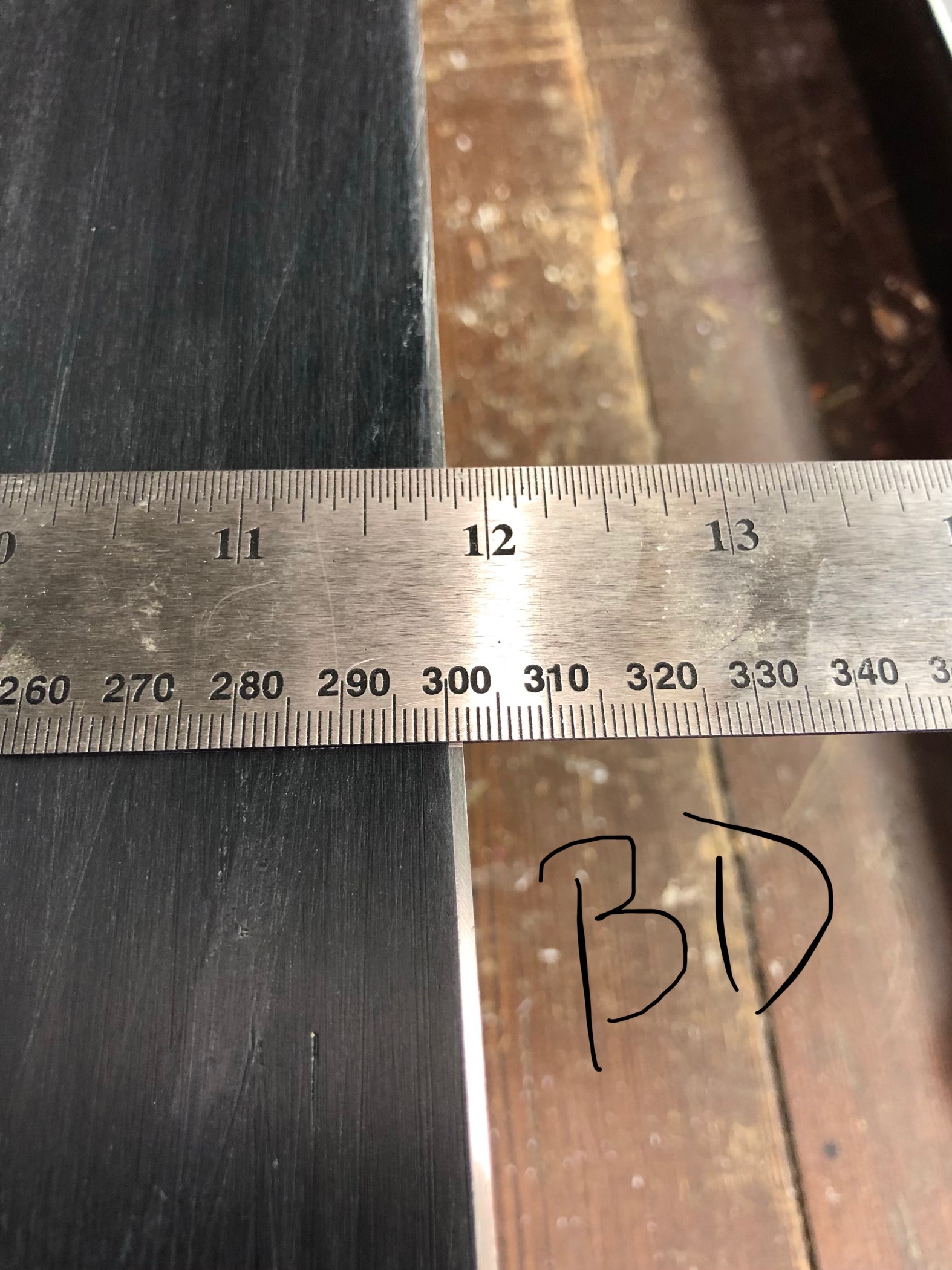 Less metal helps shed some grams on the Black Diamond Helio 95In another weight stripping tactic, thickness of edge material is adjusted. As you can see in the photos, this varies quite a bit. I love thick edges. They last through more tunes (I sharpen my edges often) and take the heat of a rock strike without blinking. Before you fall in love with that sexy new (and light) couloir slayer, take a peek at the edges. If they’re 1mm, put the board down and walk away. Period.
Less metal helps shed some grams on the Black Diamond Helio 95In another weight stripping tactic, thickness of edge material is adjusted. As you can see in the photos, this varies quite a bit. I love thick edges. They last through more tunes (I sharpen my edges often) and take the heat of a rock strike without blinking. Before you fall in love with that sexy new (and light) couloir slayer, take a peek at the edges. If they’re 1mm, put the board down and walk away. Period.
Core
Another key ingredient of a quality ski is the core material. Any combination of fiberglass, foam, wood, rubber and metal can be used and all affect the characteristics of the final product. Obviously, weight is impacted by all the choices but equally importantly, so is the skiability. Qualities like dampness, pop, edge hold, etc, all vary depending upon these choices. I think it’s critical that we find what we like in a ski’s characteristics for the various goals we have and find a few that fill the bill.
Sidewall
Another key characteristic of a ski is the type of sidewall it has. Traditionally, skis all had a standard, full-length ABS plastic sidewall that ran the length of the ski. 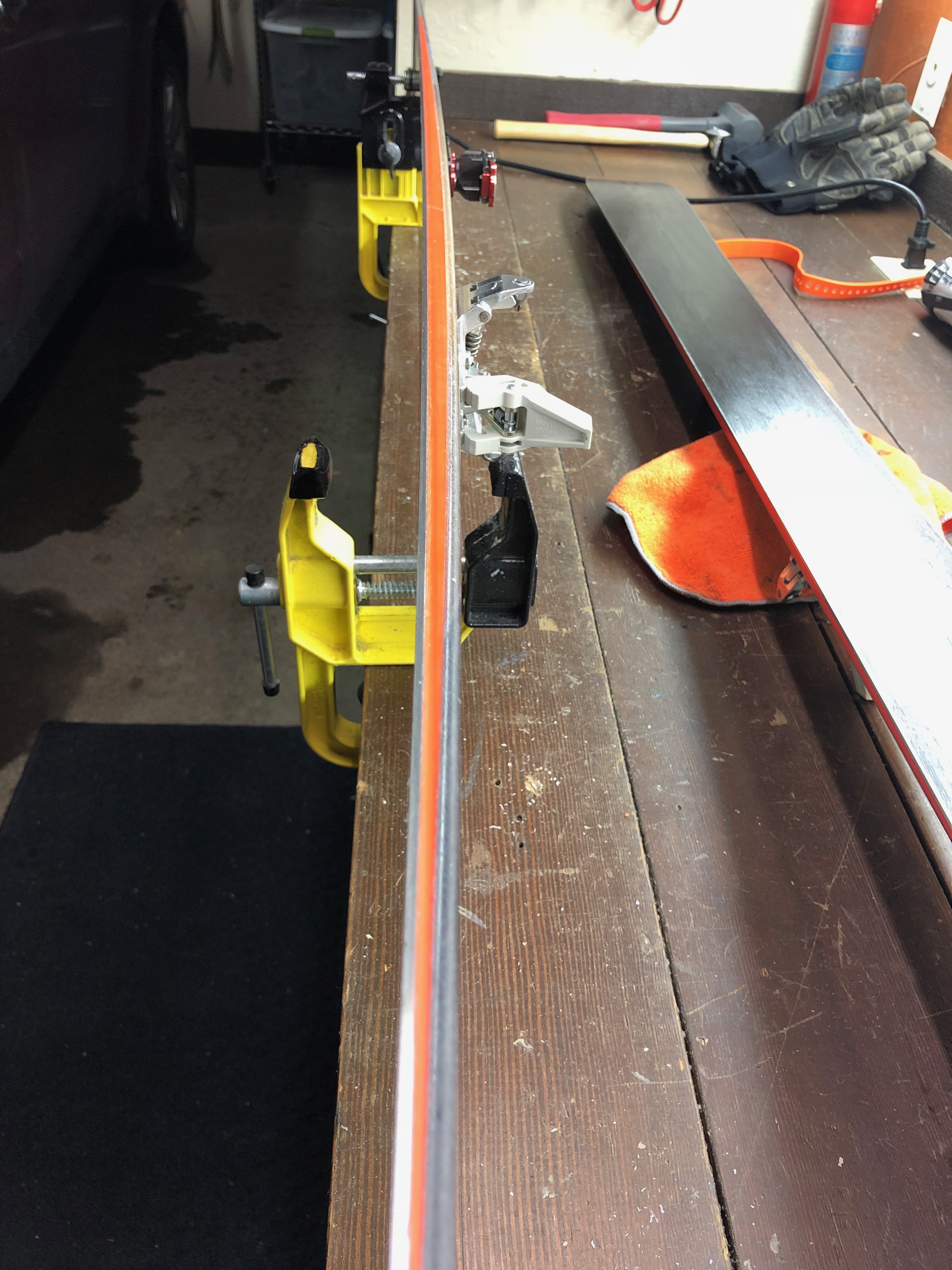 Full length ABS sidewall on the Atomic Backland 95More recently, the development of the cap construction both dropped weight and simplified the lay up of the ski during manufacture. In my experience, cap skis are certainly lighter as a rule but the lack of a real sidewall makes them more prone to rock strike damage to the metal edge. I also find that partial or full sidewall skis tend to have flex characteristics that I favor. There are a lot of subjective terms that go into describing what I’m talking about but I’ll spare you those here. Let’s just say, for technical skiing, I like having at least some sidewall. I say “some” here because several brands have struck a compromise between cap and sidewall construction and have partial sidewalls, mainly under the foot or further fore and aft.
Full length ABS sidewall on the Atomic Backland 95More recently, the development of the cap construction both dropped weight and simplified the lay up of the ski during manufacture. In my experience, cap skis are certainly lighter as a rule but the lack of a real sidewall makes them more prone to rock strike damage to the metal edge. I also find that partial or full sidewall skis tend to have flex characteristics that I favor. There are a lot of subjective terms that go into describing what I’m talking about but I’ll spare you those here. Let’s just say, for technical skiing, I like having at least some sidewall. I say “some” here because several brands have struck a compromise between cap and sidewall construction and have partial sidewalls, mainly under the foot or further fore and aft. 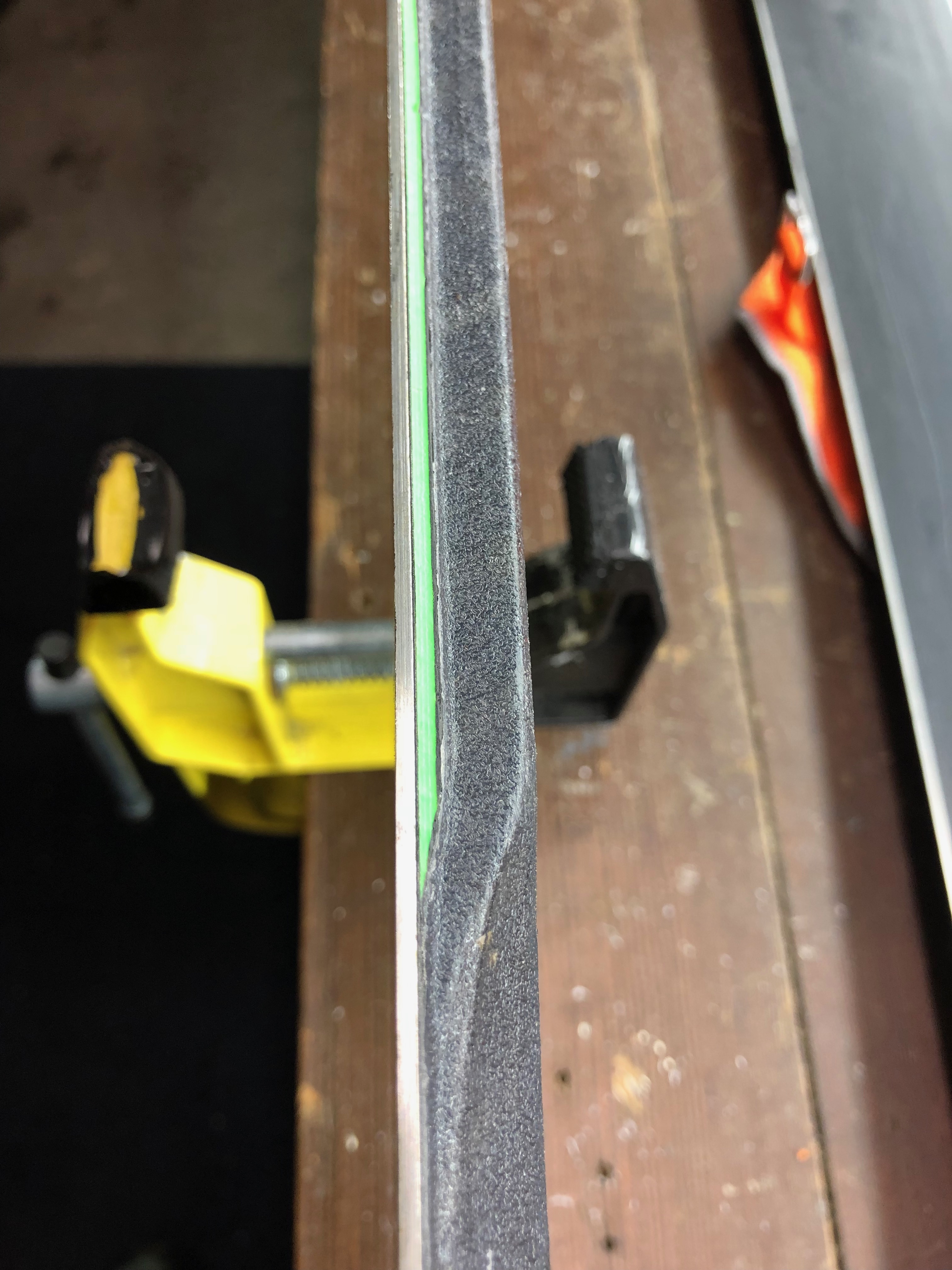 Underfoot ABS sidewall on a Movement Vertex XThis gives some of the benefits of the feature while maintaining some of the weight saving of cap construction. I’ll talk about some below.
Underfoot ABS sidewall on a Movement Vertex XThis gives some of the benefits of the feature while maintaining some of the weight saving of cap construction. I’ll talk about some below.
Glass/Lay up
The final bit of construction minutia involves the outer material of the ski. Once again, I don’t want to get too far into the weeds here. Suffice it to say that you pay a premium for carbon fiber and other more technical lay ups than simple fiberglass. These choices have a significant impact on the durability of the ski as well as turning and edge hold qualities.
Current Quiver
Below are the skis that I have currently in rotation. Although I’m a firm believer in the right tool for the job, I’ve been guilty of taking the wrong ski out for the current conditions because of the nature of the mission. For example, on one blue bird powder day last winter, we were chasing lines that involved a significant approach and ski out. As I dropped into a long bowl run, the 84mm underfoot was not handing the knee deep pow and free ride turns. I adjusted my speed and turn radius and things were fine but a fat ski would’ve been way more fun. On the other hand, the 15+ miles of skinning passed by easily on the more nimble boards. On other days with no particular goal in mind except to just get out and ski, I’ll look at my rack and simply take a pair out because they’ve not seen any action for a few weeks. I’m a firm believer that this kind of variation in both boot and ski choice makes me a more versatile skier and keeps entertainment level high.
Ski Trab
 Although race skis don’t see much use for me these days, I still get out on them for entertainment and a couple of times most seasons they will find their way on some beat down link up/tour that needs speed over all things. The top of the heap in race skis continues to be the Trab Gara Aero World Cup. As much as I coveted this new iteration, I couldn’t justify the $1,000 price tag (yes, really). But when a friend was offering a pair still in plastic for $300, I jumped right on up and took them home. They’re still the best skiing, most dependable race stick on the market.
Although race skis don’t see much use for me these days, I still get out on them for entertainment and a couple of times most seasons they will find their way on some beat down link up/tour that needs speed over all things. The top of the heap in race skis continues to be the Trab Gara Aero World Cup. As much as I coveted this new iteration, I couldn’t justify the $1,000 price tag (yes, really). But when a friend was offering a pair still in plastic for $300, I jumped right on up and took them home. They’re still the best skiing, most dependable race stick on the market.
Movement
If I ever had to commit to one ski brand for all my needs it would probably be this Swiss company. They’ve been making light, durable boards for years. They have a huge following in Europe and only recently traversed the Atlantic to find a steadily growing following here in the States. The reason is simple. They make a wide variety of incredibly durable, light, fun skiing planks. What more do you want? Until recently, their offerings were in the “Euro sizes”, commonly 75mm to 90mm underfoot. But to quench the thirst of fatter ski lovers, they’ve expanded their size range out to 106mm. That’ll handle most pow pow days unless you’re snorkeling in Japan.
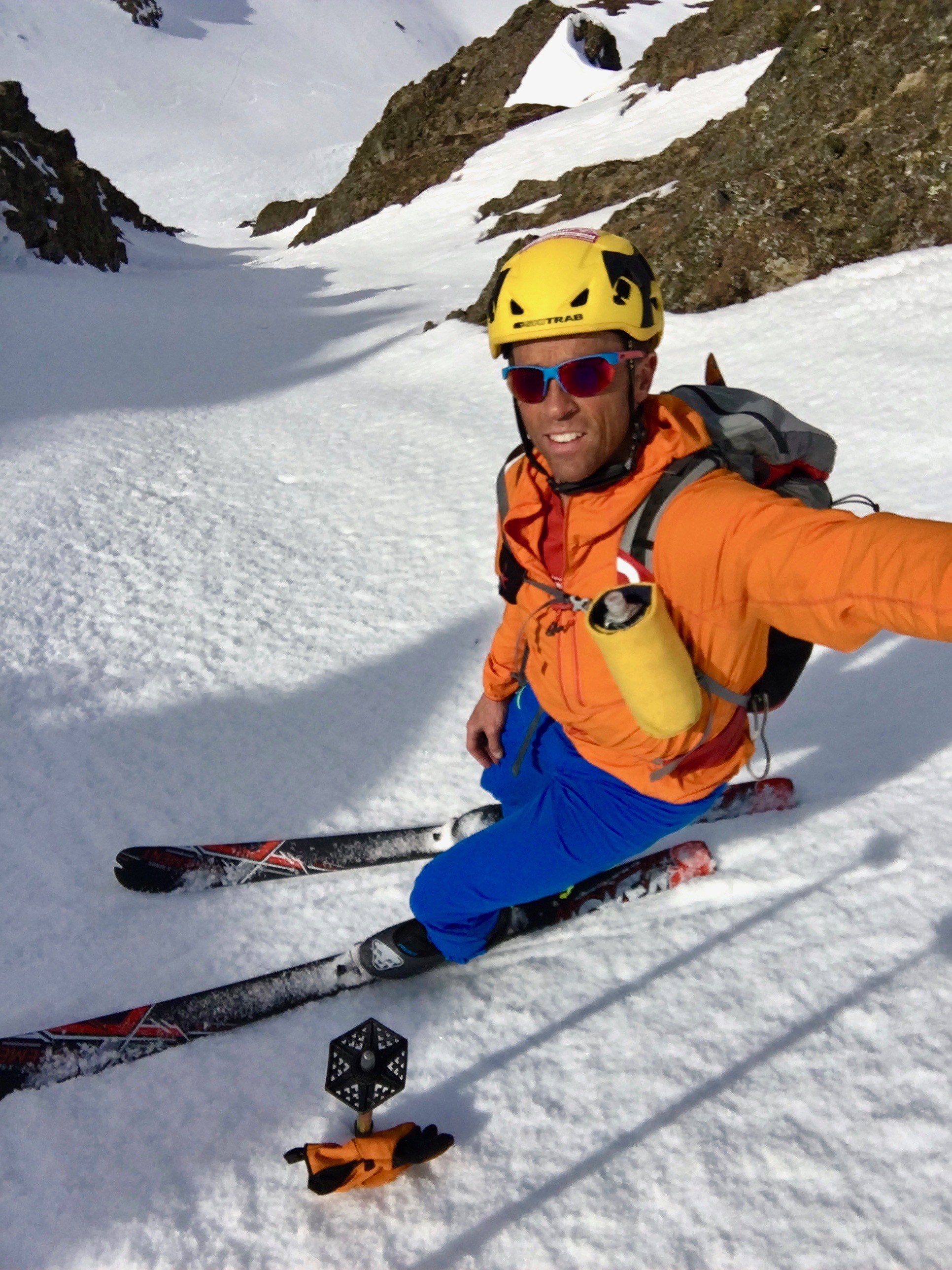 The Movement Big Fish in its elementStarting on the skinny side, my first ski in this line is the Big Fish-X at 77mm underfoot and 940 grams each for the 168cm length with cap construction. This is the least forgiving of all Movement skis I’ve been on. It’s stiff and light and, for me, occupies a very narrow place in my quiver. The ski comes equipped with burly 1.8mm edges and P-tex 5000 bases. It’s absolutely bomb proof on firm, edgy snow in fall-you-die terrain. But I think that’s where it ends. When conditions soften or become variable, the Big Fish tends to beat me up. But I have others in line for that.
The Movement Big Fish in its elementStarting on the skinny side, my first ski in this line is the Big Fish-X at 77mm underfoot and 940 grams each for the 168cm length with cap construction. This is the least forgiving of all Movement skis I’ve been on. It’s stiff and light and, for me, occupies a very narrow place in my quiver. The ski comes equipped with burly 1.8mm edges and P-tex 5000 bases. It’s absolutely bomb proof on firm, edgy snow in fall-you-die terrain. But I think that’s where it ends. When conditions soften or become variable, the Big Fish tends to beat me up. But I have others in line for that.
 Next up is likely my favorite ski for everything - the Vertex X. At 84mm underfoot and 1,100 grams for the 177cm version, this ski seems to do everything pretty damn well. From steep turns on scary hard surfaces to shrelping free ride arcs in boot deep fluff, the Vertex is up to the task. Like I indicated earlier, I definitely want more ski when the bottom falls out but for everything else, this thing delivers. In an interesting move, Movement discontinued this world wide favorite, consolidating it within the Alp Tracks line. The shape remains the same but the new lay up lightens things a bit (1,050 grams for 177cm) and probably changes the on-snow feel but I don’t know if this is a bad thing. Along with this width, they’ve added a 94, 100 and 106mm length if you’re really prone to dialing in your ski choice for the day. I owned the 100mm version for a time but mounted it with a binding I hated due to it’s steep ramp angle. Rather than redrill it I decided to simply sell it. I had no complaints regarding how it skied as it floated well in deeper snow but held an edge like a boss on groomers.
Next up is likely my favorite ski for everything - the Vertex X. At 84mm underfoot and 1,100 grams for the 177cm version, this ski seems to do everything pretty damn well. From steep turns on scary hard surfaces to shrelping free ride arcs in boot deep fluff, the Vertex is up to the task. Like I indicated earlier, I definitely want more ski when the bottom falls out but for everything else, this thing delivers. In an interesting move, Movement discontinued this world wide favorite, consolidating it within the Alp Tracks line. The shape remains the same but the new lay up lightens things a bit (1,050 grams for 177cm) and probably changes the on-snow feel but I don’t know if this is a bad thing. Along with this width, they’ve added a 94, 100 and 106mm length if you’re really prone to dialing in your ski choice for the day. I owned the 100mm version for a time but mounted it with a binding I hated due to it’s steep ramp angle. Rather than redrill it I decided to simply sell it. I had no complaints regarding how it skied as it floated well in deeper snow but held an edge like a boss on groomers.
Voile
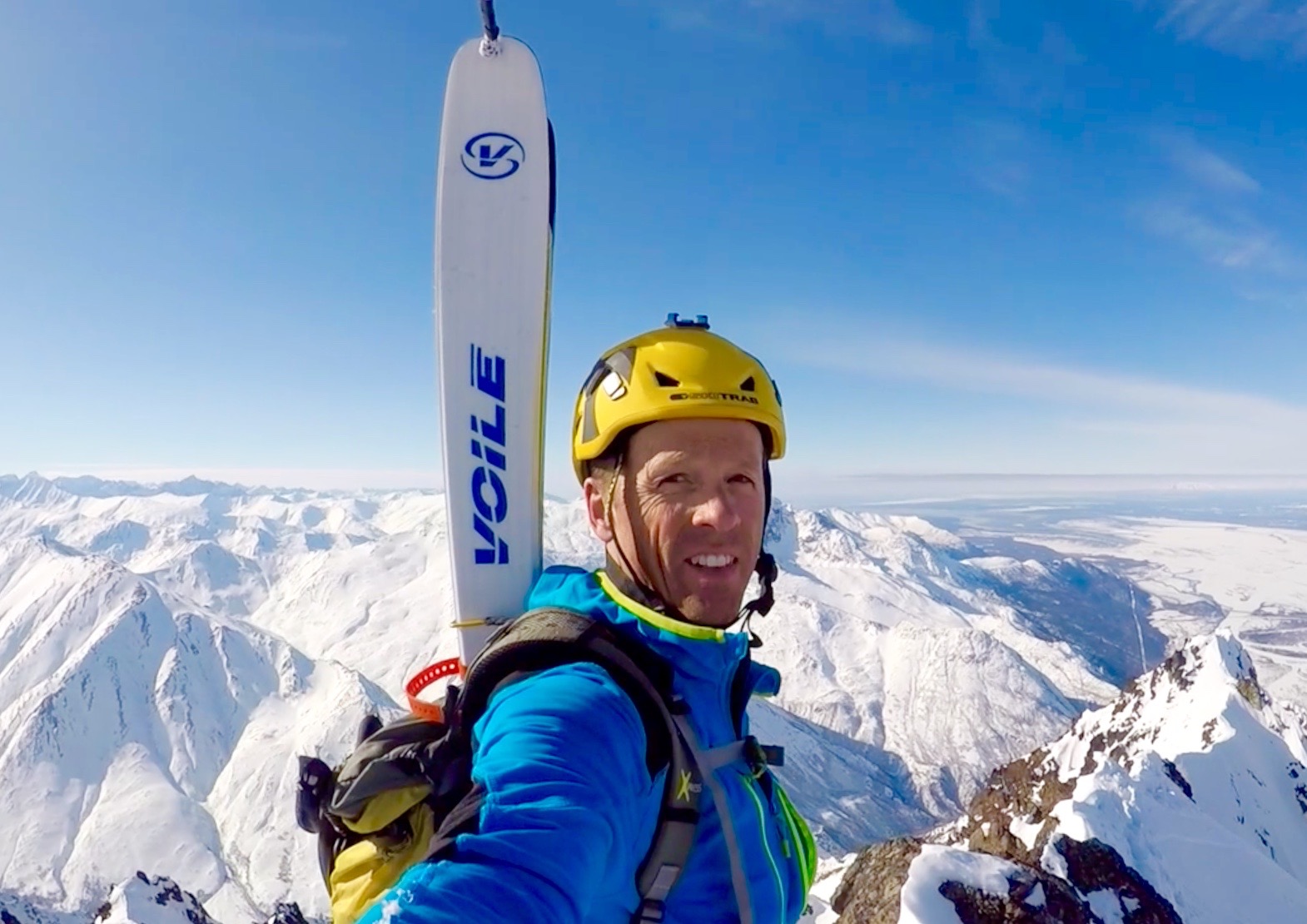 Living up to its name on Pioneer Peak, AKAlthough I love the Vertex X for most skimo outings, I also like a short ski when things get technical and hard in the spring. I could’ve simply purchased a shorter version but instead decided to get something different…just because. After asking around folks who know, the consensus was the Objective by the Salt Lake City based company Voile. I was pleasantly surprised by the versatility of this offering. Like the Vertex, it does everything well. Equipped with beefy edges that can take a hit and a flex pattern that provides predictable turning, this is a ski alpinism tool. The 82mm underfoot and 171cm length comes in a 1,150 grams. I mounted it specifically with the Plum Race 145 fitted for the Scarpa Alien RS. But then I decided I wanted to be able to ski it with a bigger boot and went back and mounted a Race 170 heel on it using inserts for all the holes to maintain my options. It’s the best of both worlds.
Living up to its name on Pioneer Peak, AKAlthough I love the Vertex X for most skimo outings, I also like a short ski when things get technical and hard in the spring. I could’ve simply purchased a shorter version but instead decided to get something different…just because. After asking around folks who know, the consensus was the Objective by the Salt Lake City based company Voile. I was pleasantly surprised by the versatility of this offering. Like the Vertex, it does everything well. Equipped with beefy edges that can take a hit and a flex pattern that provides predictable turning, this is a ski alpinism tool. The 82mm underfoot and 171cm length comes in a 1,150 grams. I mounted it specifically with the Plum Race 145 fitted for the Scarpa Alien RS. But then I decided I wanted to be able to ski it with a bigger boot and went back and mounted a Race 170 heel on it using inserts for all the holes to maintain my options. It’s the best of both worlds.
I’ve had the ski out in everything from frozen-terror-slide-for-life to pretty damn steep and deep pow in the Wasteland. The softer flex and rockered tip make it fun it all conditions. My only complaint is that it’s a full cap ski. The saving grace here is that Voile doesn’t skimp on edge or base material so the fragile nature of some cap skis is avoided here. Kudos to them.
Atomic
 In my desire to move slightly away from bouncy light skis last year in search of a damp daily driver, I settled on the Atomic Backland 95 in a 177cm length (1,350 grams). Obviously, the weight puts in the middle of similar skis in the class. Another couple of options I toyed with that partners like quite a bit are the Black Diamond Helio 95 (1,380 grams for 173cm) and the Movement Apex (1,485 grams for 177cm).
In my desire to move slightly away from bouncy light skis last year in search of a damp daily driver, I settled on the Atomic Backland 95 in a 177cm length (1,350 grams). Obviously, the weight puts in the middle of similar skis in the class. Another couple of options I toyed with that partners like quite a bit are the Black Diamond Helio 95 (1,380 grams for 173cm) and the Movement Apex (1,485 grams for 177cm).
The Backland has full ABS sidewalls and at interesting beveled tip design that makes for predictable and undemanding turning. The tail is softer and more forgiving than more challenging skis in the category (think Blizzard Zero G). Once again, I’ve skied it in all conditions save for pure spring missions since I blew my knee before I had the chance. But for midwinter long-range and short-range outings, the Backland 95 was up for everything.
DPS
 In my opinion, DPS pretty much rules the powder skiing world. My first time on the early generation Wailer 112 was a complete mind-blowing game changer. I’ve been loyal to them for my powder whoring needs ever since. A couple of years ago I updated my choice with the new Tour 1 lay up which cleaved serious weight off the original. That diet comes at the expense of some high speed stability but more than makes up for it on the climb. They switched from sidewall construction to cap build but rocks shouldn’t be an issue when these puppies see the light of day on my feet. I think that the Tour 1 Wailer 112 is the perfect choice for powder shredding in a weight conscious world.
In my opinion, DPS pretty much rules the powder skiing world. My first time on the early generation Wailer 112 was a complete mind-blowing game changer. I’ve been loyal to them for my powder whoring needs ever since. A couple of years ago I updated my choice with the new Tour 1 lay up which cleaved serious weight off the original. That diet comes at the expense of some high speed stability but more than makes up for it on the climb. They switched from sidewall construction to cap build but rocks shouldn’t be an issue when these puppies see the light of day on my feet. I think that the Tour 1 Wailer 112 is the perfect choice for powder shredding in a weight conscious world.
So, that pretty much rounds out what skis I’ve been on lately. These are the keepers. You'll find everything here, expert advise and top notch customer service at Skimo Co in Salt Lake City, UT. Truly one stop shopping for all your ski mountaineering and free ride/powder shredding needs.